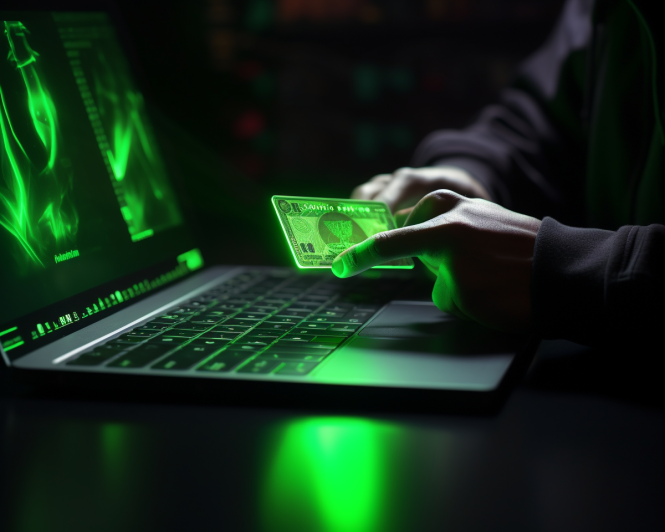Every election year, questions about the safety and accuracy of our voting system arise. Concerns over miscounts or interference aren’t anything new, but fresh approaches may fix them. Some tech enthusiasts have suggested blockchain voting as a better alternative.
You’ve probably heard people bring up blockchain technology as a solution to a range of problems. As a result, it can be hard to tell if blockchains are genuinely promising or just a buzzword. To clear things up, let’s take a closer look at how blockchain tech could change elections.
Issues With the Current Voting Model
To understand blockchains’ advantages, it helps to know where today’s voting systems may fall short. First, America has low voter participation, with just 64% of eligible Americans registered in 2016. Even among registered voters, elections can be inaccessible, leading to low turnout and misrepresentation.
Since Election Day is a Tuesday and not a holiday, some people have trouble getting to polling stations. Limited locations and staffing shortages can lead to 10-hour waits in some areas. Mail-in voting provides a possible solution to these in-person problems, but strict and confusing procedures can mean disqualified ballots.
Online voting seems like a natural step forward, but that comes with some other issues. Like anything else on the internet, online ballots are subject to hacking, glitches and data breaches. These are just a sampling of the problems voters face, so something needs to change.
How Blockchain Voting Could Provide a Way Forward
Blockchain first emerged in 2009 as the underlying technology for bitcoin, the world’s first cryptocurrency. Bitcoin, powered by blockchain technology, was supposed to serve as a safer, more reliable alternative to fiat currency. Some people have suggested that blockchain voting could do the same thing for the election system.
A blockchain election would enable people to vote online, solving the accessibility problem. Unlike other online solutions, though, blockchain technology has built-in safeguards against fraud and tampering. That’s because blockchains are completely transparent but simultaneously unchangeable.
Blockchains store digital information as blocks in a chain, or public record, of similar blocks, hence the name. Once something is on the chain, anyone can see it, but no one can change it. Since it’s locked into place, someone would have to hack the entire chain to alter one block.
You’re probably starting to see how this would help elections now. If these blocks were votes, they would be easy to count and hard to hack. Accurate election results would be available quickly and wouldn’t require as many staff.
How Would Blockchain Elections Work?
Blockchain voting would work a lot like how cryptocurrency transactions work. When you pay for something with crypto, you send a coin from your wallet to someone else’s. A distributed network of computers verifies the transaction and then stores the record on the blockchain.
Now imagine that instead of a cryptocurrency token, your coin is a vote. When you click on the candidate of your choice, the distributed network verifies it, then locks it into place. While this may sound complicated, it would be as straightforward as pushing a button or two.
For safety, voters would have to register and authenticate their identity before using this blockchain. They could do that through biometrics or multifactor authentication, like many apps today use.
This process isn’t just hypothetical, either. In the 2018 midterm elections, West Virginia used a blockchain voting app for the state’s out-of-country voters. More than 100 people in 29 countries were able to vote on the platform.
Potential Problems With Blockchain Voting
At this point, it seems like blockchain voting is a no-brainer. Despite these advantages, though, there are several lingering issues with this sort of election system. Until the technology can get past these problems, it may be too significant a risk for nationwide voting.
Blockchains have trouble holding up under increased use, often slowing down when many people use them simultaneously. With more than 150 million registered voters, the chances of a slowed system are high. What’s more troubling, though, is the cybersecurity risks that exist outside of the blockchain.
While blockchains themselves are highly secure, votes may be at risk before they’re locked in the chain. Malware on someone’s device could change or delete a vote before it enters the blockchain. There’s also the issue of privacy.
Blocks don’t carry any personal identifiers, but the voter verification process does. If hackers break into the authentication software, they tie people to their anonymized IDs on the blockchain. They could then publicize who voted for what, compromising voter privacy.
Blockchains Need to Improve Before They Can Handle Elections
In its current state, blockchain technology isn’t ideal for running an election. There are too many variables surrounding digital systems as a whole that blockchains don’t address. That could change in the future, though.
With more advancement, blockchain engineers could find ways around these issues. Once they do, this method of voting could make the democratic process safer and more accessible. Until then, though, blockchain elections are better in theory than in practice.
Recent Stories
Follow Us On
Get the latest tech stories and news in seconds!
Sign up for our newsletter below to receive updates about technology trends














